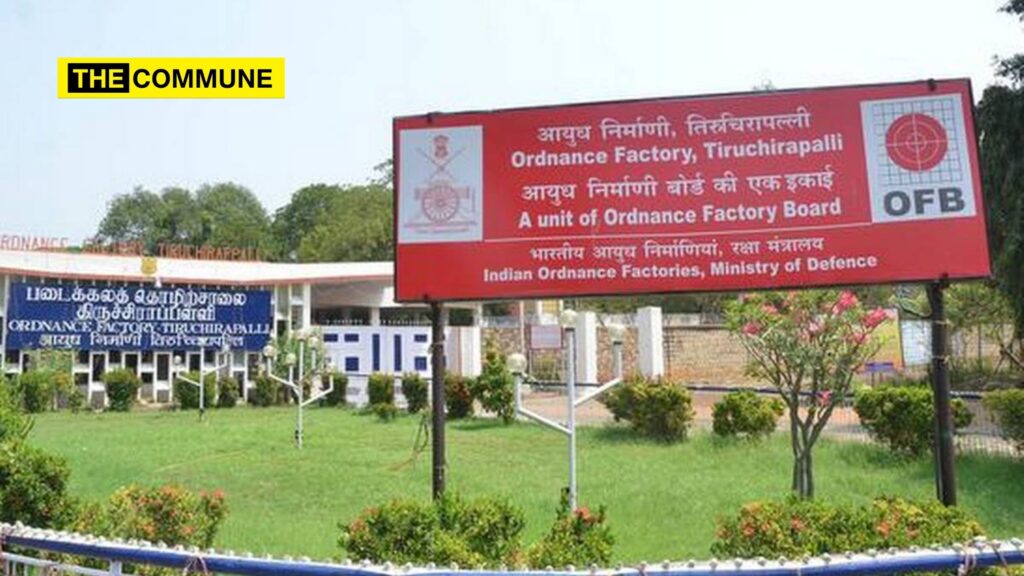In a scathing indictment of the state-owned Ordnance Factory Board (OFB), media reports citing an internal army report said that the OFB manufactured substandard ammunition. Reports said that over the last six years, 100 medium artillery guns could have been purchased for the amount of money spent on the faulty ammunition.
Faulty ammunition can not only destroy a gun but many times inflict causality on those soldiers and officers who are testing the guns.
It is estimated the exchequer lost ₹960 crore due to poor quality OFB ammunition between 2014 and 2020. The report noted that, “₹960 crore roughly means 100 155-mm medium artillery guns could have been bought for this amount.”
These controversial remarks reportedly came form an internal Army report to the Ministry of Defence (MoD), said to have been accessed by India Today.
The OFB is responsible for manufacturing ammunition and weaponry for the Indian armed forces and is administered by the MoD’s Department of Defence Production.
Many have called the OFB a relic of the old socialist system and the time has come to get rid of this world’s oldest government-controlled weapons production organizations.
The ammunition that has been singled out includes 23-mm air defence shells, artillery shells, 125-mm tank rounds and different calibres of bullets used in infantry assault rifles.
Quoting the the Army report, it stated the ‘poor quality production’ at the OFB, leading to monetary resources but more importantly loss of human life due to accidents caused by faulty ammunition.
“Lack of accountability and poor quality of production results in frequent accidents. This results in injuries and deaths of soldiers. On an average, one accident takes place per week,” says the report which is said to be now with the MoD.
Since 2014, there have been 403 accidents related to faulty ammunition since 2014. However, after the advent of the Modi government the numbers of accidents have steadily reduced.
From 114 accidents in 2014, the number reduced to 53 by 2017, rose again to 78 in 2018 and dipped once again to just 16 in 2019.However, nothing can quantify the human casualty figures and accidents often lead to permanent disabilities and loss of limbs.
So far only 13 accidents have taken place in 2020, with no loss of life. Weapons testing is a important and dangerous process which is necessary to ensure in case of a serious conflict, the armed forces are ready to use them at a moments notice.
There is also a growing need for private players to become ‘mini-OFB’ type suppliers who can manufacture quality munitions.
Earlier this month, the Army’s ‘ammunition-in-chief’, the Master General Ordnance (MGO) Lt Gen Upadhya said at an industry interaction, “OFB is in any case available to us. We want a parallel capacity to come up. It may not be at the scale of the OFB. But to start with, at least a parallel set up should come and various types of ammunition would then be available from the industry which can then settle down and in the times to come, a scaling up can take place.”
However, the OFB in its press statement has refuted the reports stating that it was aimed at spreading misinformation and were defamatory and alarmist in nature.
It said that it did not have the possession of the internal Indian Army report cited by the various publications and accused the media houses of not seeking clarification before publishing.
It came down heavy on the authors of the reports for publishing articles based on “unverified internal report of the Indian Army”. The OFB claimed that accidents are complex phenomenon and there are multiple reasons for their occurrence such as poor gun maintenance, faulty firing drill, un-validated design changes in the weapon, faulty ammunition design among others.
“Out of the total number of accidents where defect investigation has been completed, only 2 per cent of the cases where casualties have been reported are attributable to the OFB,” read the statement, adding that the 98 per cent of the cases where there have been casualties reported, were not attributable to the OFB.

